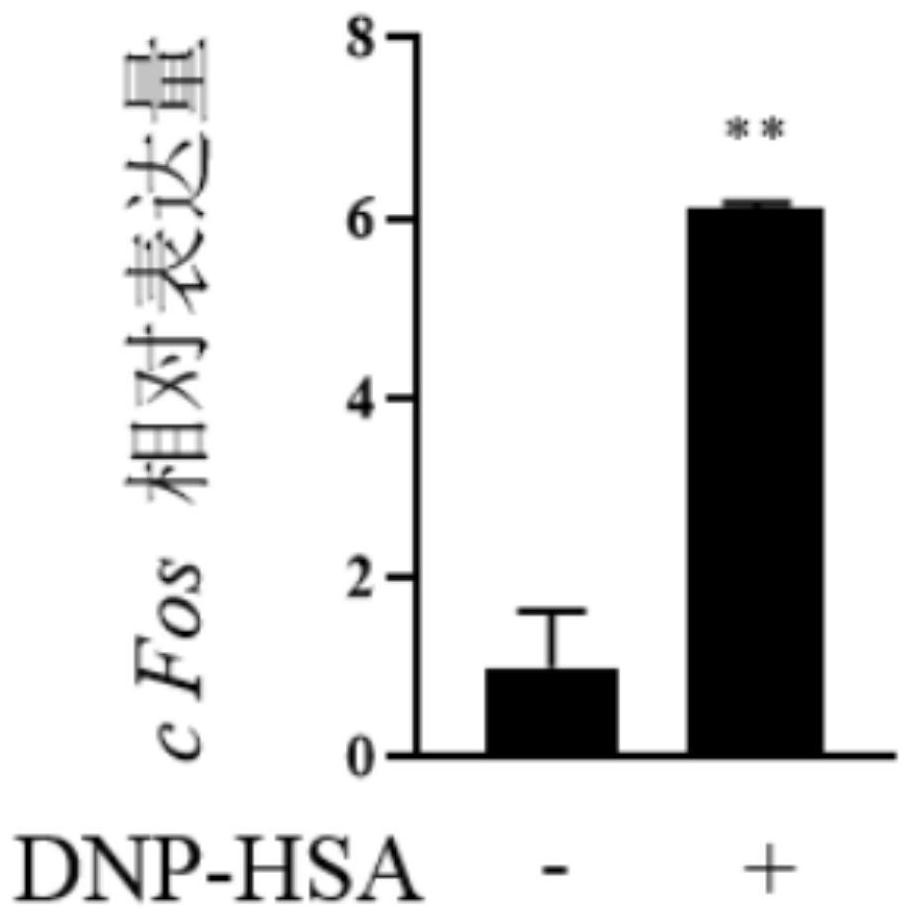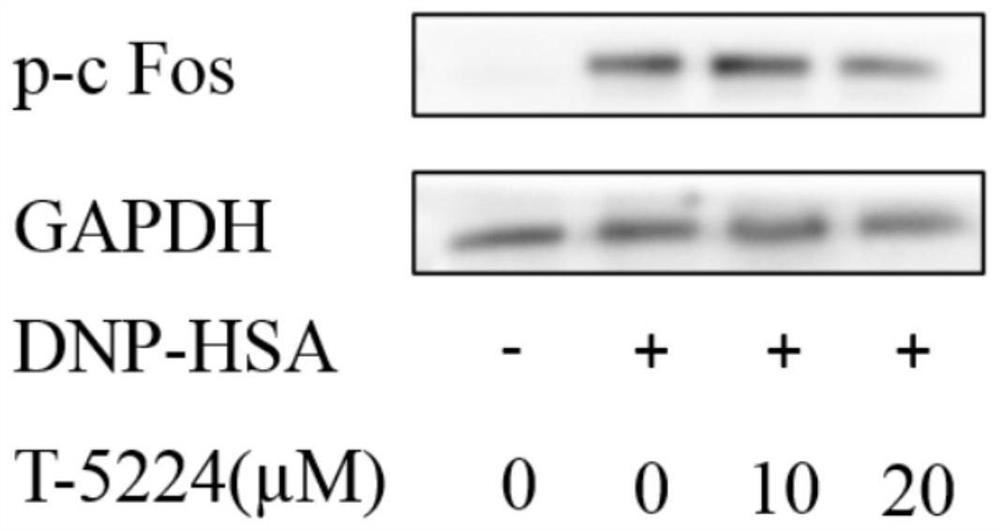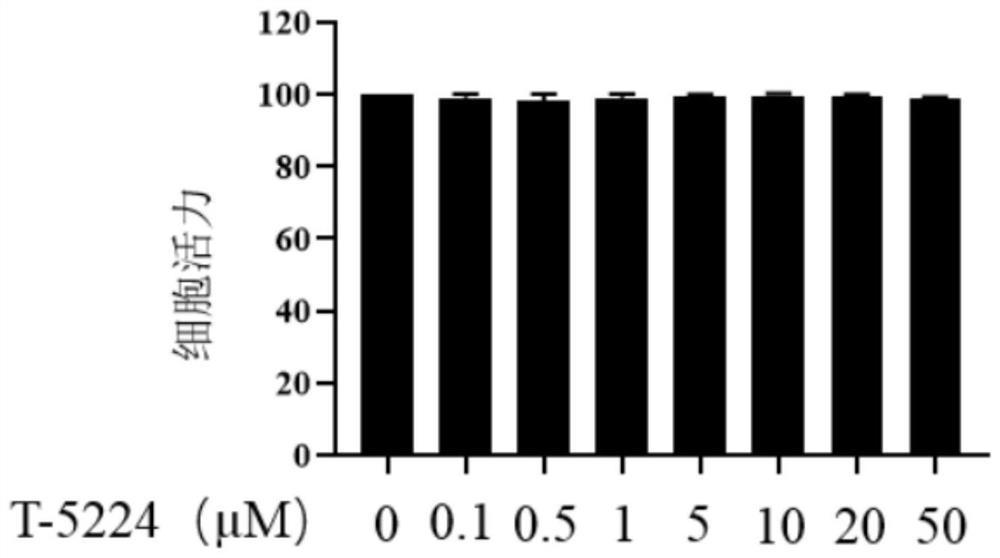Application of a compound in the preparation of antiallergic drugs
A compound and anti-allergic technology, applied in drug combinations, allergic diseases, pharmaceutical formulations, etc., can solve the problems of few types of anti-allergic drugs, large side effects, poor efficacy, etc., and achieve inhibition of mast cell degranulation, inhibition of allergic reactions, The effect of wide application prospects
- Summary
- Abstract
- Description
- Claims
- Application Information
AI Technical Summary
Problems solved by technology
Method used
Image
Examples
Embodiment 1
[0029] Inhibitory effect of T-5224 on basophil (RBL-2H3) degranulation in rats:
specific Embodiment approach
[0030] Rat basophils have a good allergic immune response in the diagnosis and immunotherapy of research allergy. RBL-2H3 has a high affinity IgE receptor. They can be activated to secrete histamine and other transmitters by clustering these receptors or by cooperating with calcium ionophores. This cell line is widely used to study mast cell FcERI and secreted biochemical pathways. The specific implementation is as follows:
[0031] 1. RT-PCR: RBL-2H3 (5×10 5 / per well) were seeded in 6-well plates, incubated with anti-DNP IgE overnight to sensitize, incubated with T-5224 for one hour, and stimulated with DNP-HSA (dinitrophenylated human serum albumin) for 4 hours. Total RNA was extracted with the RNeasy Mini Kit (Qiagen, Düsseldorf, Germany) according to the manufacturer's instructions. Use Honor TM ⅡStrandcDNA Synthesis Kit to synthesize cDNA. use terabytes Premix Ex Taq TM (Tokyo, Japan) reagents to quantify mRNA levels.
[0032] 2. Western blotting to detect the...
Embodiment 2
[0038] T-5224 inhibits degranulation of bone marrow-derived mast cells (BMMCs)
[0039] 1. Cell culture: BMMCs were isolated from Balb / c mice (purchased from Guangdong Medical Laboratory Animal Center), in RPMI (Hyclone) 10% FBS (Gibico), 1% double antibody, 10ng / ml IL-3 and SCF Culture for 4-6 weeks.
[0040] 2. Toxic effect of CCK8 detection cells on T-5224: inoculate BMMC (1×104 / well) in 96-well plate, add T-5224 after 24 hours, and continue to incubate for 24 hours. Then add 10ul of CCK8 reagent, incubate for 1 hour, and finally measure the absorbance (OD value) on a microplate reader with a wavelength of 450nm.
[0041] 3. Release of β-aminoglycosidase: inoculate BMMC in a 24-well plate, incubate with anti-DNP IgE overnight to sensitize, incubate with T-5224 for one hour, stimulate with DNP-HSA (sigma) for 30 minutes, and take 50ul The clear reacted with 50ul of substrate at 37℃ for 90min. The absorbance was measured at 405nm. After discarding the supernatant, add 500u...
PUM
 Login to View More
Login to View More Abstract
Description
Claims
Application Information
 Login to View More
Login to View More - R&D
- Intellectual Property
- Life Sciences
- Materials
- Tech Scout
- Unparalleled Data Quality
- Higher Quality Content
- 60% Fewer Hallucinations
Browse by: Latest US Patents, China's latest patents, Technical Efficacy Thesaurus, Application Domain, Technology Topic, Popular Technical Reports.
© 2025 PatSnap. All rights reserved.Legal|Privacy policy|Modern Slavery Act Transparency Statement|Sitemap|About US| Contact US: help@patsnap.com



